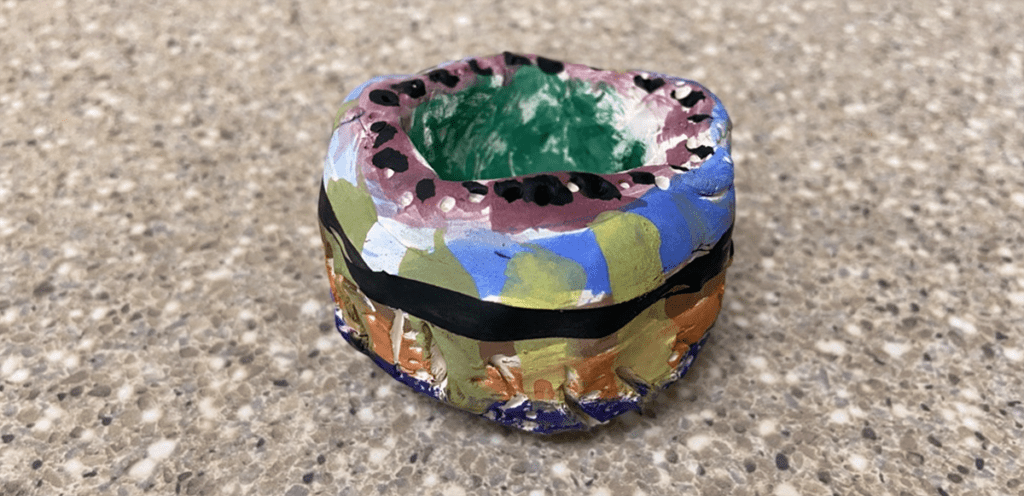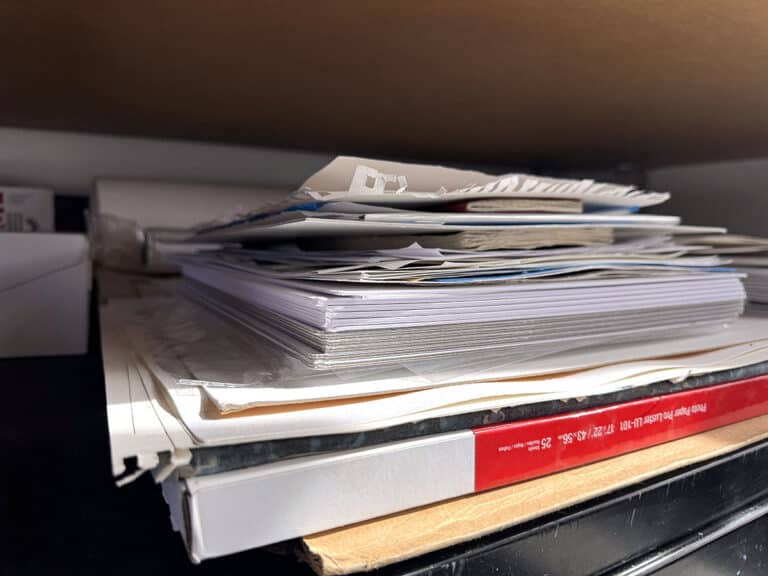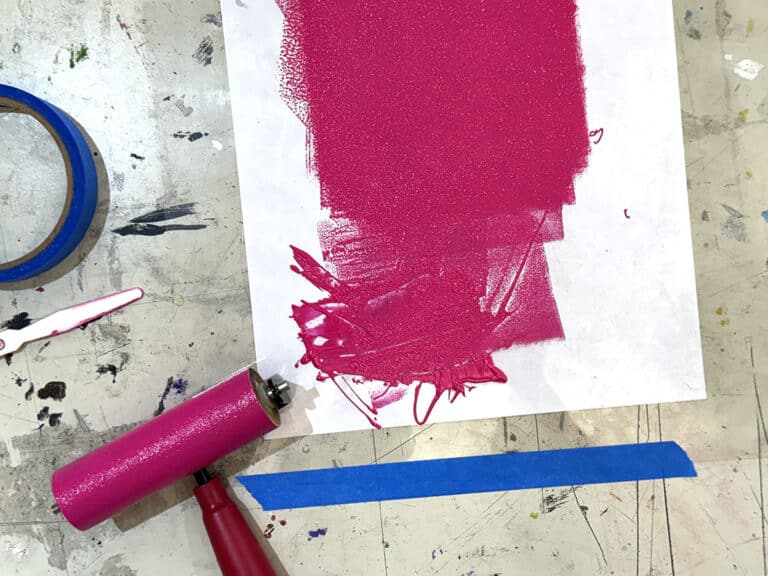Tempera cakes are the unsung heroes of the art room. They are easy to clean, compact to store, and a breeze to distribute. Tempera cakes produce bold, opaque colors that pop on a variety of surfaces, from construction paper and cardboard to wood and even clay. These durable blocks of concentrated color are a versatile tool that can help your budget as much as your students’ artwork!
Keep reading to learn what tempera cakes are, how to use them, and even how to make your own.

What are tempera cakes?
All paint consists of three basic components: pigment, which provides the color; a binder, which holds the pigment together; and a solvent, which thins the paint and allows it to flow. Tempera cakes are chunks of pigment with a binder that you activate by adding water. The name tempera paint comes from the verb “temper” meaning “to bring to a desired consistency.” Whether it is liquid tempera or a tempera cake, the paint is water miscible, meaning you can dilute it with water to bring it to the desired consistency.
Do I need to be concerned about students with egg allergies?
Artists throughout history made their own tempera with an egg yolk binder. Some artists even mixed egg into their oils to prevent cracking and protect the painting from humidity. Of course, working with eggs presented some challenges, such as drying out, hardening too quickly, and producing a rotting smell. Modern store-bought tempera typically doesn’t use egg yolks. Because of allergies and other practical concerns, tempera cakes typically use a gum arabic binder, which has an extremely long shelf life. If you are using mass-produced tempera cakes, you don’t need to worry about eggs.

How do I stretch my paint budget?
A set of tempera cakes will last a long time. Just like a watercolor pan, you can allow the tempera cakes to dry out, and then simply wet them to reactivate the paints. This significantly cuts down on waste. While you apply them in a similar manner to watercolors, tempera cakes tend to produce bolder, more opaque colors. This makes them a great option for painting on construction paper, cardboard, and any other colored surface. While a good set of tempera cakes can be a bit expensive, they will last significantly longer than most other forms of paint. The quality and saturation of pigment can vary from brand to brand, so test a few to find the best value before investing in full-class sets.
What are some ways to mix things up?
Tempera cakes are a highly versatile medium. Because they mix with water and go with the flow, they tend to work well with a lot of other media. Good quality tempera cakes are an economical way to paint ceramics if you don’t have a kiln or don’t want to use pricey glazes. Kids love them because the colors are bright and bold and, unlike glazing, the pieces will be ready to take home the same day. If you plan to use tempera cakes on clay, be sure to bisque fire the pieces before painting and never put any paint through the kiln. Also, keep in mind that some brands work better than others so do some tests to see what works best. If the tempera finish feels gritty and chalky, consider spraying a clear sealant to protect the finished pieces.

Students of all ages love the magical effect of a resist! Just like watercolors, tempera cakes will slide right off the slick surface of crayon or oil pastel marks. Consider using tempera cakes when you want higher contrast and bolder colors in your mixed media resists.
How do I get the most out of my tempera cakes?
How students use a tool is the most important factor in the overall quality of the final product. Plus, it pays to take care of art room tools and materials because that is money back in the budget for the next year! There are many ways to make your tempera cakes last as long as possible.
Try these tips to take care of your tempera cakes:
- Move the tempera cakes into durable muffin tins and use ice cube trays with lids to mix and store custom paint colors.
- Spend time explicitly teaching students about the role of water in color saturation and viscosity. Give them scrap paper to experiment and explore.
- Watch the Pack, Tempera Paint Basics, in PRO Learning for tips, hacks, and strategies to use and organize tempera.
- Use two-sided pet bowls for cleaner brushes and cleaner palettes. Students use one side to clean their brush and use the other side to grab clean water they can mix into their paint colors.
- Rinse or gently wipe the top of your tempera cakes to keep them clean.
- Spray the tempera cakes with water to activate the paint for a few minutes before distributing the sets to students.
Can I make my own tempera cakes?
Have you ever wanted to mix up your own custom paint set? Imagine the possibilities! Mix in glitter or glow-in-the-dark powders to create an array of custom colors you and your students will love. Creating your own tempera cakes is much easier than you may expect. You can also have students whip up their own batch to foster a deeper appreciation for the medium.
Ingredients:
- Powdered tempera pigment
- Gum arabic
- Water
Instructions:
- Combine roughly equal amounts of powdered tempera pigment and gum arabic in a bowl.
- Slowly add water, a few drops at a time, while mixing to create a thick, smooth paste.
- Press the mixture into ice cube trays or silicone molds.
- Allow the tempera cakes to dry completely. This may take several days, depending on the thickness of the cakes and the humidity level.
- Store the tempera cakes in a cool, dry place.

Tempera cakes are a powerful art material. Their ease of use, vibrant colors, and versatility make them an ideal choice for students of all ages and skill levels. There are many exciting ways to use tempera paint once you know the basics and how to make them. Invest in tempera cakes to give students the rich, bold, and opaque color of tempera without the stress, mess, and waste of pouring liquid tempera onto palettes. Bring tempera cakes to your students to stretch your budget, customize a fun art material for your students, and create vibrant artwork this year!
Share your favorite art project to make with tempera cakes!
What would you mix into a tempera cake to take it to the next level?
Magazine articles and podcasts are opinions of professional education contributors and do not necessarily represent the position of the Art of Education University (AOEU) or its academic offerings. Contributors use terms in the way they are most often talked about in the scope of their educational experiences.





